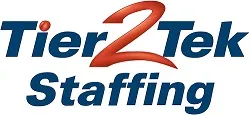Top Full Stack Developer Interview Questions to Help You Hire the Best Talent

Hiring a skilled Full Stack Developer is essential for building robust and dynamic web applications. With expertise in both front-end and back-end development, these professionals bring diverse skills that drive projects forward. Preparing the right Full Stack Developer interview questions helps identify candidates with strong technical knowledge and problem-solving abilities. Below, we’ve compiled essential questions to guide your interview process and help find the best fit for your team.
Key Full Stack Developer Interview Questions
What are the core technologies used by Full Stack Developers?
A Full Stack Developer typically works with a combination of front-end and back-end technologies, including HTML, CSS, JavaScript, and frameworks like React or Angular. For the back end, they commonly use server-side languages like Python, Ruby, or PHP, along with databases such as MySQL or MongoDB.
Can you explain the concept of RESTful APIs and how they are used?
RESTful APIs allow different software systems to communicate over the internet using HTTP requests. They enable developers to connect the front end of a web application to the back end, allowing for dynamic content updates without reloading the page.
What is the difference between SQL and NoSQL databases?
SQL databases, like MySQL and PostgreSQL, use structured query language and are ideal for managing relational data. NoSQL databases, such as MongoDB and Cassandra, are more flexible and store unstructured data, making them suitable for applications with changing data requirements.
How do you ensure the security of a web application?
To secure a web application, Full Stack Developers implement best practices such as input validation, data encryption, and proper authentication mechanisms. Using secure coding standards and regularly updating software components also help prevent vulnerabilities.
Describe a challenging project you worked on as a Full Stack Developer.
This question allows candidates to discuss a real-world project, showcasing their technical and problem-solving skills. Look for examples of how they tackled complex issues, collaborated with team members, and delivered successful outcomes.
What is your experience with cloud platforms like AWS or Azure?
Understanding cloud platforms is increasingly important for Full Stack Developers. Ask candidates about their experience with deploying applications, using cloud-based services, or managing infrastructure on platforms like AWS or Azure.
How do you handle version control and collaboration?
Version control systems like Git are essential for collaborative development. Candidates should be comfortable using Git for branching, merging, and resolving conflicts, and they should have experience working with tools like GitHub or Bitbucket for team collaboration.
Why is responsive design important, and how do you achieve it?
Responsive design ensures that web applications look and function well on devices of all sizes. Full Stack Developers achieve this by using flexible layouts, CSS media queries, and frameworks like Bootstrap to create a seamless user experience across desktops, tablets, and mobile devices.
Ready to Hire the Best Full Stack Developers?
If you’re looking for top talent to elevate your projects, Tier2Tek can connect you with highly skilled Full Stack Developers. Contact us today to discuss your hiring needs and find the perfect match for your team.
